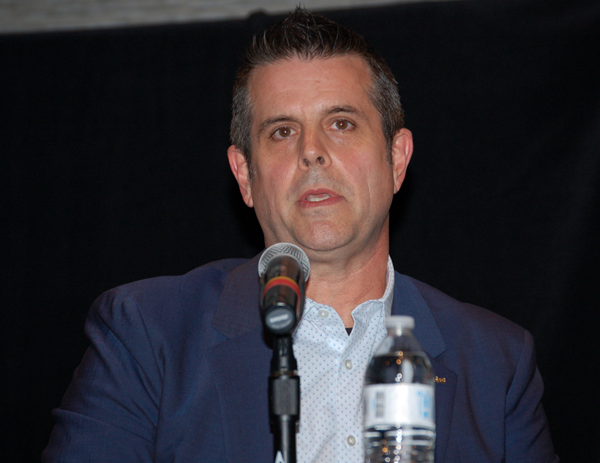The Alliance for Automotive Innovation reported in June almost 200,000 electric vehicles were sold in the first quarter of this year---a 4.2% increase over the previous quarter---representing 5.9% of overall light-duty vehicle sales. Is your shop gearing up to repair them?
Repairers, trainers, automakers and others participated in a recent panel discussion at the Collision Industry Conference (CIC) about what EVs will mean for auto body shops. Here are some of the highlights from that discussion.
Consider Your Lifts
“The normal two-post lift is not going to be the future, in my opinion,” said Virginia shop owner Barry Dorn, whose company is certified to repair a number of automaker’s EVs. His reasoning: Shops will need a lift that can be used when an EV’s main battery pack need to be removed.
“When you consider the width of the battery you are going to take out, at least for the Audi brand, the batteries are the size of a queen-size mattress and weigh close to 2,000 pounds,” said Mark Allen of Audi of America. “So you’re going to need a lift that has at least 67 inches between the posts. Not the arms, the posts. And then a flat floor underneath so you can get a lift table underneath.”
Expect to Need a Power Upgrade
Many shops in the past have had to upgrade the electrical service to their building in order to accommodate the power needs of some welding equipment. Putting in one or more EV charger stations will likely require yet another upgrade.
“The answer they are mostly getting [when shops inquire about any necessary electrical upgrades] is: You only have just enough power coming into the building to run the things you have there right now,” said Bob Augustine, co-chair of CIC’s Emerging Technology Committee hosting the panel discussion.
Other Possible Changes to Processes and Facility
“It’s a lot of Go-Jaks,” Dorn said of the dollies needed to move EVs around the shop once they have been powered down for repairs. “We had to reconfigure the drains in the floor because they get caught up on that. We had to reconfigure our paint booth because you’re pushing a dead vehicle. There are literally times we have to have a tow truck pull an EV into the booth.”
Shops also need to know what EV repairs require powering down the vehicle. Even something as seemingly minor as paintless dent repair (PDR) may require de-energizing the vehicle, Dorn said.
“Depending on the vehicle, there are some areas that are literally right beside a fender or right under the hood that are very close to areas you don’t want to be,” Dorn said of PDR.
Trying to Save Money Could Cost You
Jason Norman of Enterprise Rent-A-Car said he’s seen instances of people thinking they can reduce the cost of charging cables or adapters by getting one available online at a quarter of the cost of the OEM part.
“It’s very tempting, and it turns out they look very similar,” Norman said. “But the reality is this is one of those times when the OEM equipment and procedures are critically important. A lot of those [cheaper] adapters and cables don’t have the embedded technology to do things like measure heat and current. So you end up with significant problems.”
The panel shared a photo of the charred remains of electrical connectors inside a charging system installed some years ago by a California shop. The heat involved in EV charging also can lead to expansion and contraction, which can loosen connections over time.
“There is a certain amount of maintenance you’re looking at on these chargers,” said Oregon shop owner Ron Reichen. “You have to go in and retighten things from time to time.”
Darrell Amberson said his multi-shop collision repair company in Minnesota repairs a lot of EVs, and it’s not something shops should avoid.
“It’s no big deal. We’re still fixing cars,” Amberson said. “But on the other hand, it does require a difference from the start to the finish of the process. And every person in the organization has to have some different understanding, especially in terms of safety.”










John Yoswick